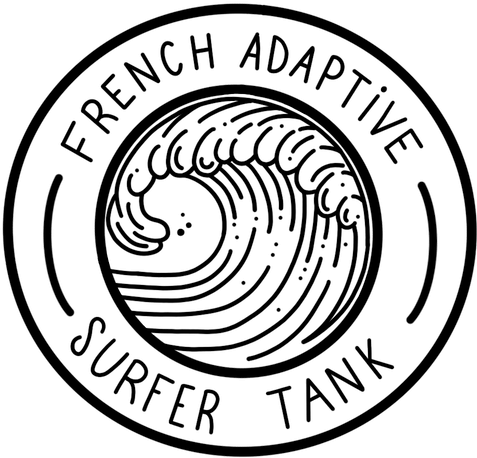The link between the ocean and a surfer is the equipment he will use (boards, fins, wetsuit, etc.) to experience gliding sensations.
In a logic of performance, and starting from the principle that each individual is unique, the first of the supports that we think of and that must be personal is: the surfboard. A surfboard can thus be adapted and calibrated to the person according to her physical characteristics, her level of performance, her sliding style as well as of course the place where she practices. This seems obvious, but it is even more so when the surfer in question has a disability.
Whether one is a standing, lying or kneeling surfer, paraplegic, quadriplegic, with motor or visual disturbances, deafness, balance disturbance, each board and element contributing to the practice of surfing should be the subject of special attention to initially compensate or increase the level of pleasure and / or performance while maintaining a security imperative.
Needless to say, each disability situation is different. And beyond, in the same type of pathology or clinical context, a solution that appears good and that works for one individual will not necessarily be for another. It’s all about research, exploration, imagination and pugnacity.
Depending on the type of disability (acquired or birth), support is also required. A former surfer, for example, who has undergone alteration, can have an idea of what he is missing and what he wants to find in terms of sensations.
A person with an innate handicap, or who has never surfed before the onset of the handicap often does not know what can be its limits or its potentialities if there has never been any experimentation or landmark on which to lean on.
Again in one situation as in the other, you have to be thirsty for exploration and discovery.
Beyond that, it is therefore a question of finding the tool most likely to meet the aspirations of its user according to several criteria which are:
- the outline of the board (its general shape which will lead it to different behaviors)
- the work on the hull and / or deck due to the supports and parts of the planks that are stressed (with the same effects as above)
- The materials (go for lightness or greater inertia)
- the choice of fins and their number or placement etc.
All in all, nothing is much different in terms of criteria than for able-bodied people, although it should not be excluded that the needs are not the same in terms of dynamic support in particular.
But when we are handicapped or have a particular impairment, personalization and adaptation will not be limited to the board. It can also concern sectors and needs as different as:
- human support in the water transportation of equipment adaptations made by professionals (orthopedists / prosthetists) individualized to the person (prostheses, orthotics, corsets, splints, hearing systems, combinations)
- specific adaptations to the person in their use of the board (inserts, additional plugs, foam, handles, etc.)
- support and the eyes of professionals and people affected by a given type of problem.
FAST therefore undertakes to support its members who wish to progress in the use, understanding and mastery of their equipment and their needs.
This support will be provided by making available and in contact with its members a network of shapers, professionals in the surfing industry, orthopedists / prosthetists and “resource people” who may have had questions and close issues in order to allow you to find the most suitable solution that is closest to your needs.
Regularly, we will also publish files linked to singular and specific themes around these questions and a specific theme. These sheets can in fact be updated as many times as necessary.
